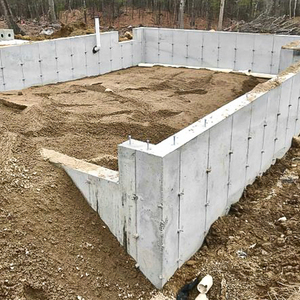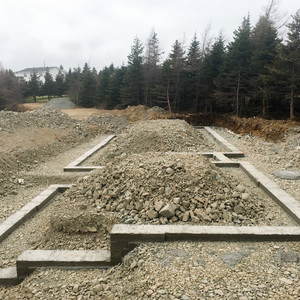
Planning a new house in Pender County, North Carolina, Jason Dennis finds the aesthetics of a crawlspace appealing, but not the potential problems. Instead, he’s thinking of pouring a slab over compacted fill inside his foundation walls — a raised slab.
The Climate Zone 3 house will be a simple rectangle, 50 feet by 39 feet, with a wraparound porch on two sides.
Dennis wants to know whether the raised slab approach is a good idea, and how such a foundation should be insulated.
“Would insulating the slab be necessary for my climate zone?” Dennis asks in a Q&A post. “If so, how should insulating be done? Rigid foam underneath like with a non-raised slab?”
Those are the questions that get us started on this Q&A Spotlight.
Insulate the slab perimeter
In referring Dennis to an earlier article on this topic, GBA Editor Martin Holladay says it’s possible to eliminate the horizontal insulation underneath the slab. But in Climate Zone 3, Dennis should not skip the vertical insulation at the slab’s perimeter.
Holladay had written: “While it could be argued that insulation might be useful in Climate Zone 3, it really isn’t needed in warmer climates, where an uninsulated slab helps lower air-conditioning bills compared to an insulated slab.”
How deep should the insulation go?
If Dennis adopts that plan — rigid insulation vertically against the inside of the stem wall but no insulation underneath the slab — the question becomes how far down the insulation should go.
“The insulation should extend down to the footings, or if they end up being very deep, a couple of feet below the exterior grade,” Malcolm Taylor replies.
The foam can be beveled at the top edge so it’s not visible on the inside while bringing the concrete all the way to the…
Weekly Newsletter
Get building science and energy efficiency advice, plus special offers, in your inbox.

This article is only available to GBA Prime Members
Sign up for a free trial and get instant access to this article as well as GBA’s complete library of premium articles and construction details.
Start Free TrialAlready a member? Log in














15 Comments
In the last image without the concrete slab, is there any reason to put the poly under the stone pad as opposed to on top of the stone and under the foam?
Jason,
I can think of a couple of reasons it would make more sense to move the poly as you suggest.
- It allows the rock to act as a capillary break below the vapour barrier.
- It raises the vapour barrier relative to the surrounding grade.
Jason,
Here's another vote in favor of moving the polyethylene up to a position above the crushed stone. That way, any water droplets in the stone can drain downwards.
Playing devil's advocate, is there a reason to not put the poly in contact with the foam? Like could trapped water cause mold or smells?
I'd be careful not to build any of those with low perm flooring (like vinyl or tile). Without drying to the interior, the OSB is likely to rot.
Jason Dennis here. I must say that I was surprised and happy to see my question chosen for a Q&A Spotlight post, but then even more surprised that another "Jason D" commented on the post. What are the odds of that? :)
Maybe it's your other personality :)
Dammit! He promised he was gonna stop posting in forums.
I'd like to see some more info on this slabless floor setup.
Links:
https://www.jlconline.com/how-to/foundations/a-basement-floor-without-concrete_o
https://www.greenbuildingadvisor.com/question/can-the-concrete-slab-be-eliminated-in-a-super-insulated-slab
Greg, here's how I did it: https://www.finehomebuilding.com/2019/02/27/minimizing-concrete-in-a-slab-on-grade-home.
Thanks guys.
“[Deleted]”
Joe Listurbek says never put the poly below the crushed stone.
I would like to see more articles on building without basements, slabs or traditional foundations. Too much concrete and too many problems related to the earth( moisture from vapor or liquid water, termites, radon, heat loss, etc.). I am beginning to think that building on pilings or helical piers is the way to go. Beach communities have been doing this for 100 years and the foundations are a fraction of the cost and go in in hours, not days. With the money saved you can buy a lot of mini splits and additional 375 watt pv panels.
Is Rockwool comfortboard 80 or 110 suitable in this application?
Log in or become a member to post a comment.
Sign up Log in